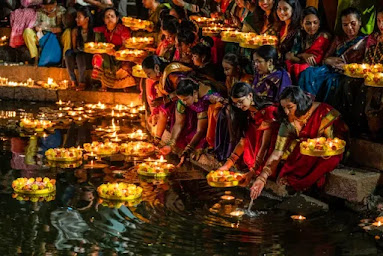Diwali: Festival of Lights

Diwali, or Dipawali, is India's greatest and most significant occasion of the year. The celebration gets its name from the line (avali) of dirt lights (deepa) that Indians light external their homes to represent the internal light that shields them from profound dimness. This celebration is as essential to Hindus as the Christmas occasion is to Christians.
In India, one of the main celebrations is Diwali or the Celebration of Lights. A five-day festivity incorporates great food, firecrackers, hued sand, and unique candles and lights. Hindus decipher the Diwali story in view of where they reside. Yet, there's one normal topic regardless of where individuals commend: the triumph of good over evil.
Throughout the long term, Diwali has turned into a public celebration that is likewise delighted in by non-Hindu people group. For example, in Jainism, Diwali marks the nirvana, or otherworldly arousing, of Master Mahavira on October 15, 527 B.C.; in Sikhism, it respects the day that Master Hargobind Ji, the 6th Sikh Master, was liberated from detainment. Buddhists in India observe Diwali also.
South India observes Diwali as the day that Master Krishna (portrayed above) crushed the evil spirit Narakasura.
Kindly be deferential of copyright. Unapproved use is precluded.
• In northern India, they praise the narrative of Ruler Rama's re-visitation of Ayodhya after he crushed Ravana by lighting lines of mud lights.
• Southern India celebrates it as the day that Ruler Krishna crushed the evil spirit Narakasura.
• In western India the celebration denotes the day that Master Vishnu, the Preserver (one of the principal lords of the Hindu trinity) sent the devil Lord Bali to administer the underworld.
Diwali is praised north of five days. The very beginning: Individuals clean their homes and shop for gold or cooking wares to assist with bringing favourable luck. DAY TWO: Individuals enliven their homes with mud lights and make configuration designs called rangoli on the floor utilizing shaded powders or sand. DAY THREE: On the principal day of the celebration, families assemble for Lakshmi puja, a request to Goddess Lakshmi, trailed by mouth-watering banquets and firecracker merriments. DAY FOUR: This is the main day of the new year when companions and family members visit with gifts and all the best for the season. DAY FIVE: Siblings visit their wedded sisters, who invite them with affection and an extravagant feast.



Comments
Post a Comment